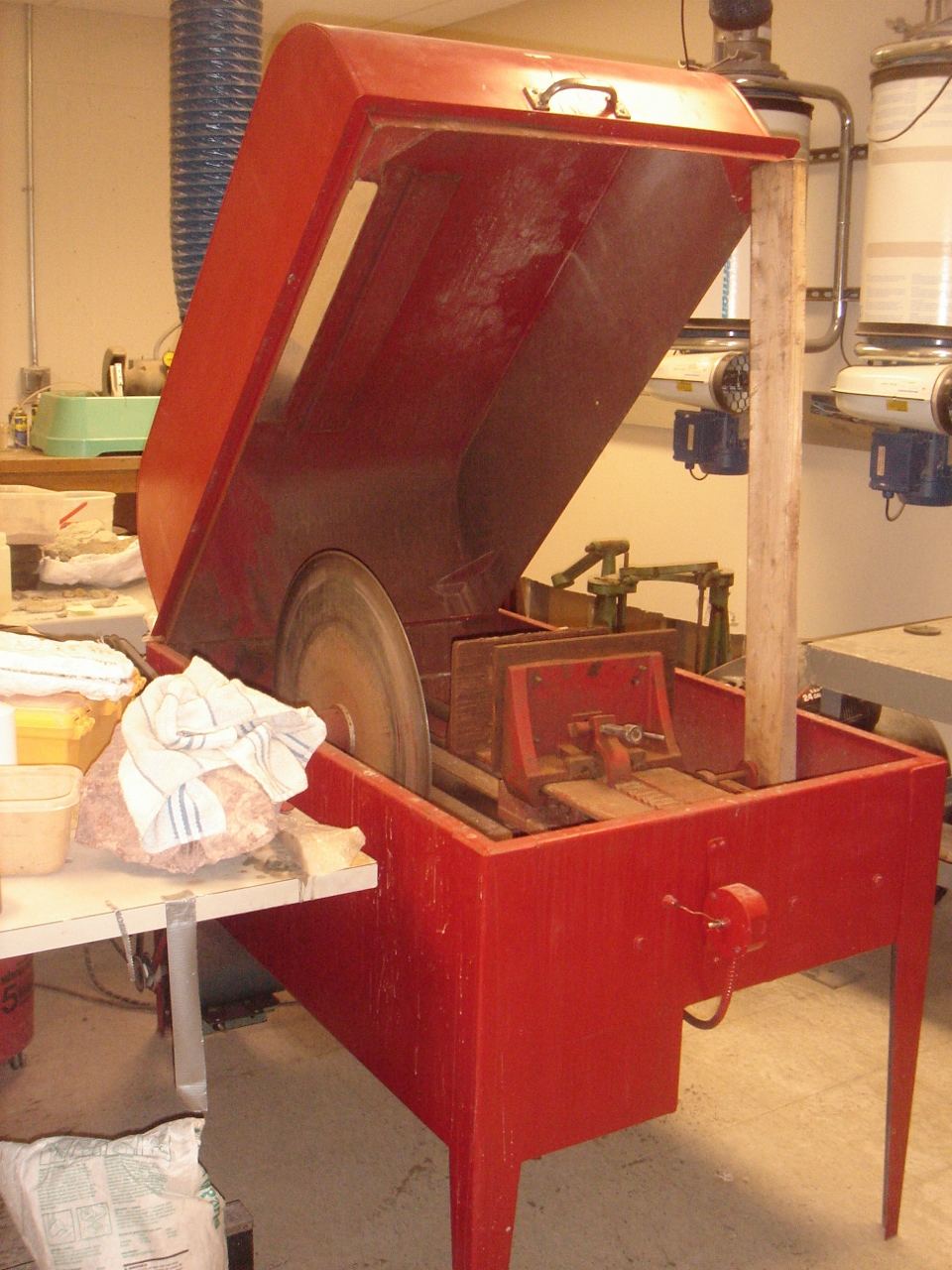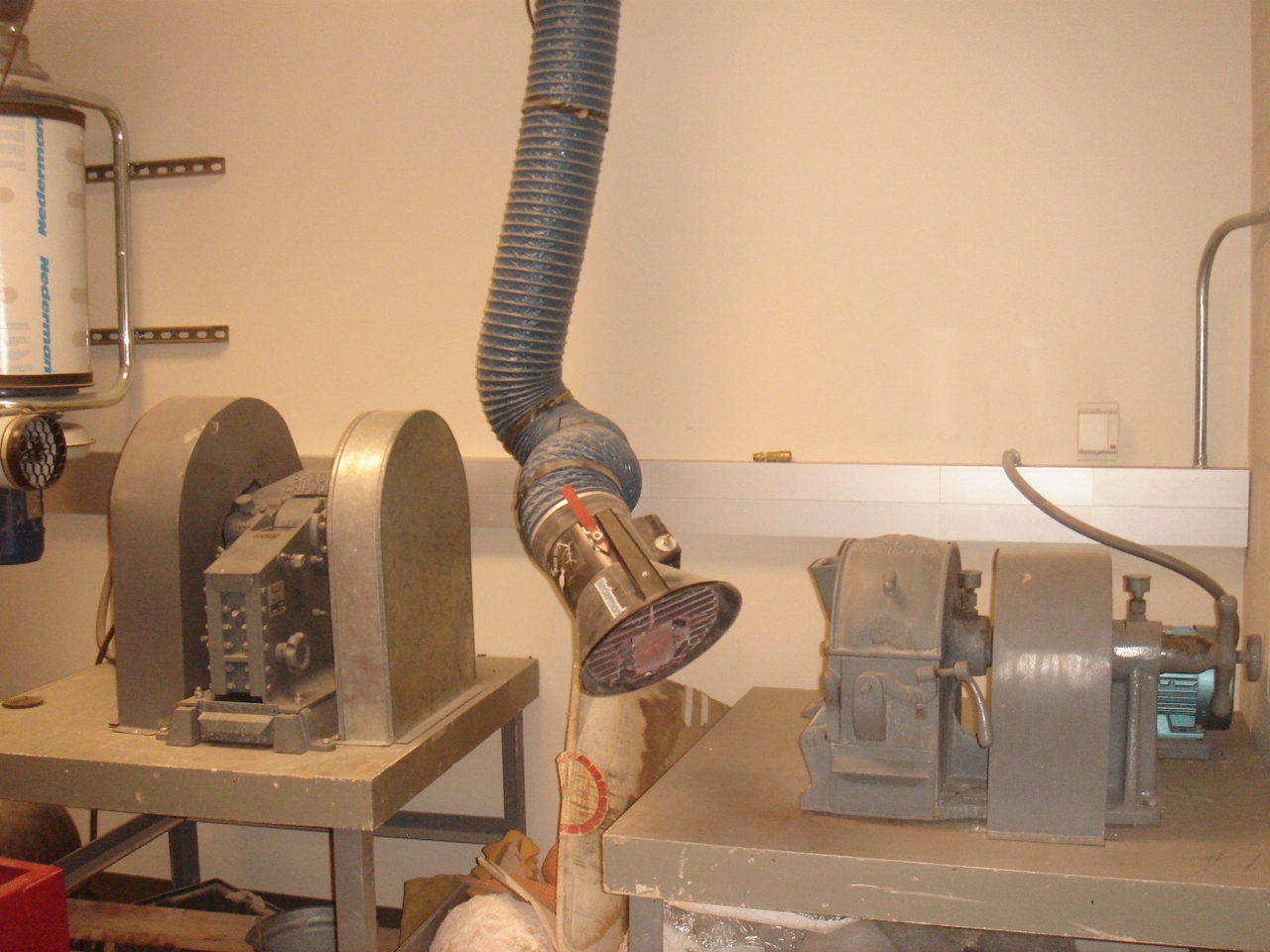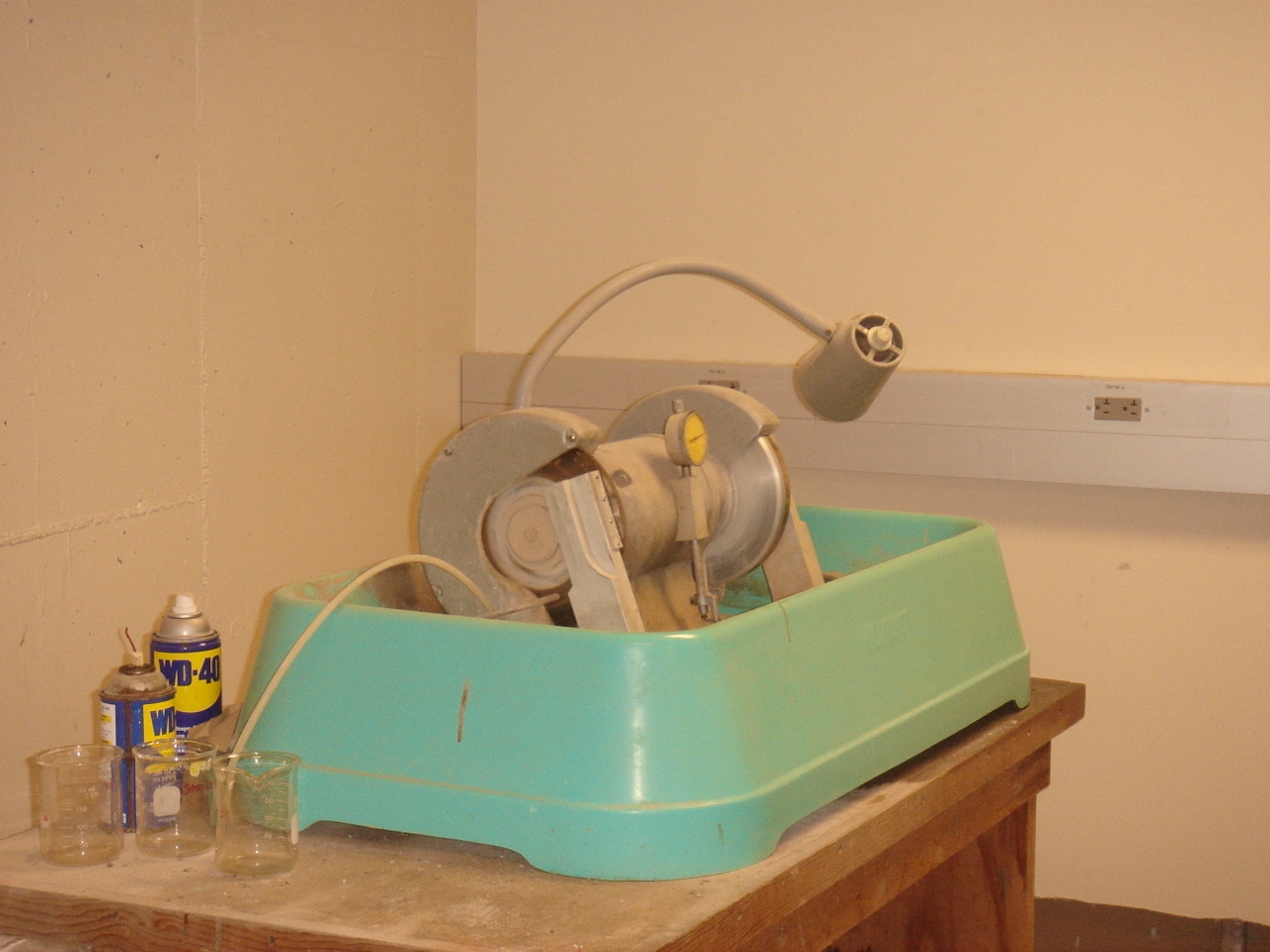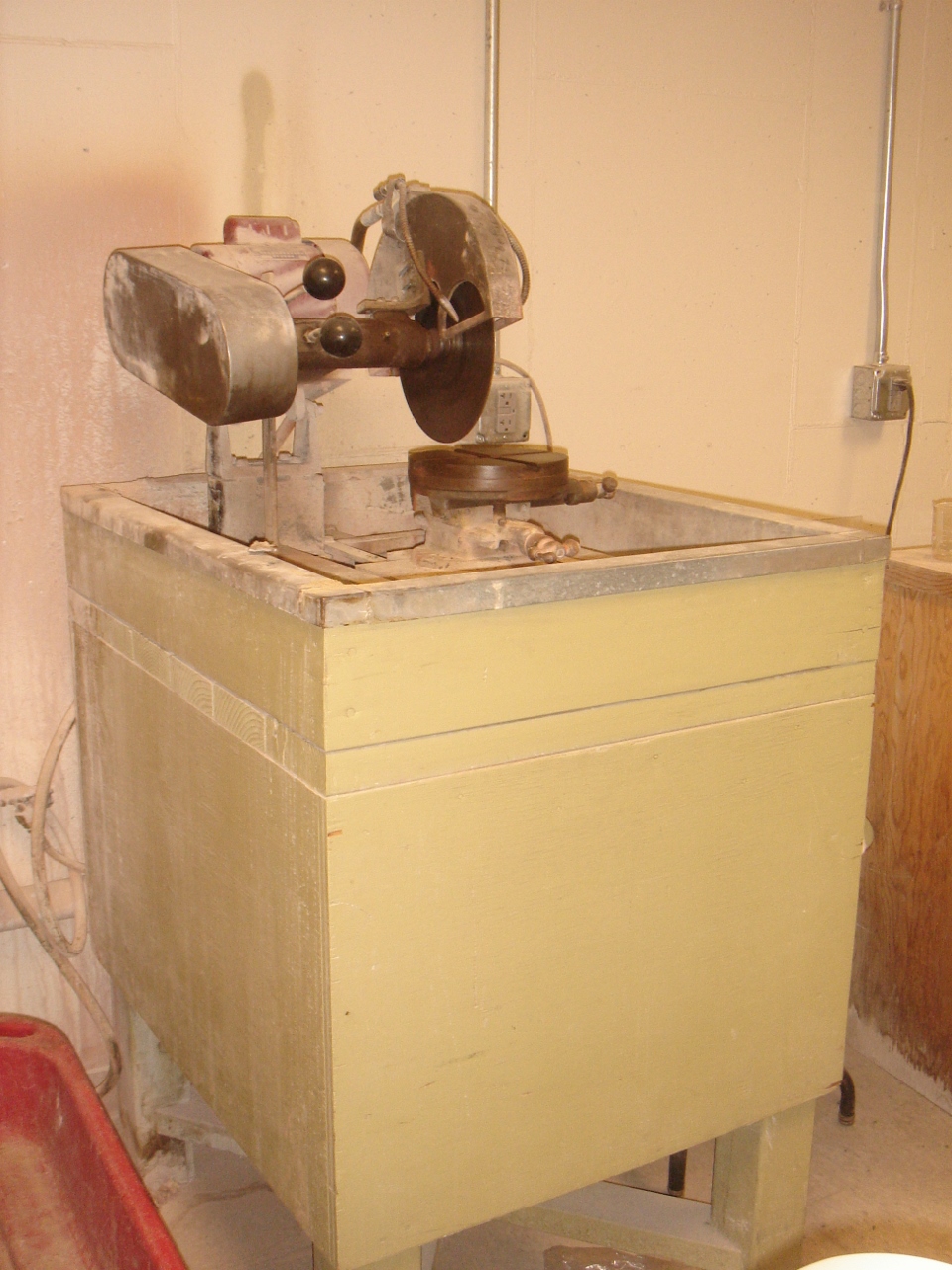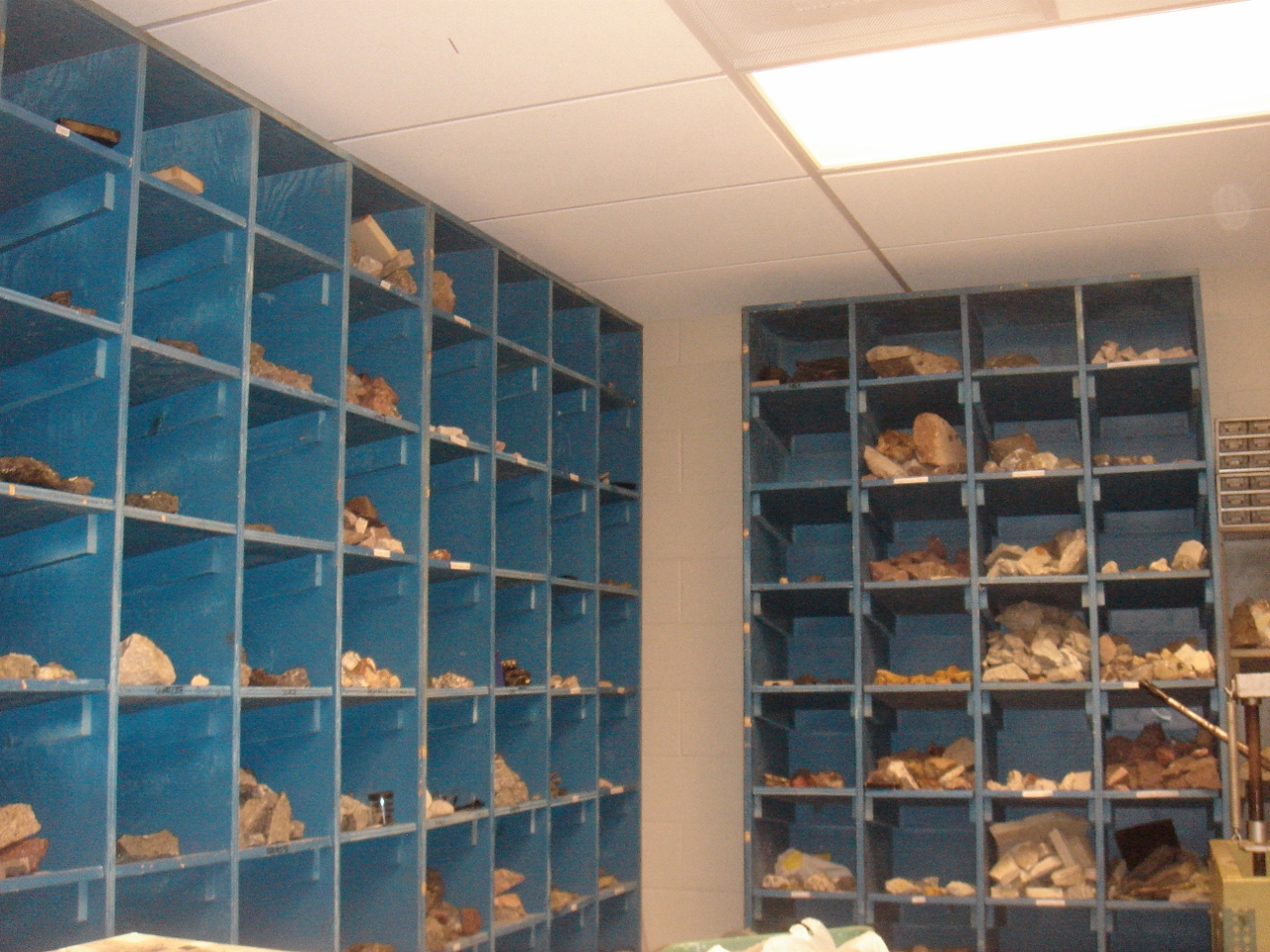Facilities and Field Locations
The GES department is based in the A. Paul Schaap Science Center, which houses laboratory space, workshops, specimens, equipment
and classrooms — but that's just the start.
Our courses and research extend beyond the classroom.
Research sites
- The Lake Macatawa Watershed
- The Day1 Watershed course and the GES 401: Advanced Environmental Seminar course both
concentrate on studying environmental issues in and around Lake Macatawa, right here
in Holland, Michigan.
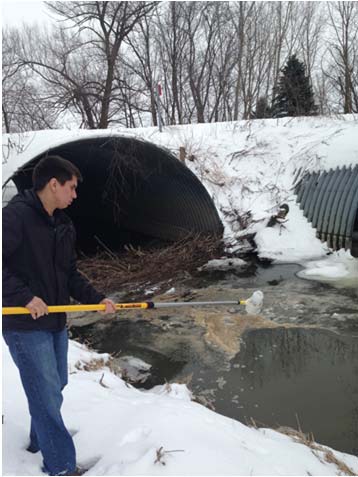
- Saugatuck Harbor Natural Area
- An interdunal wetland that hosts a variety of rare plants and animals is an ideal
place to document interactions between geological and ecological processes. This site
has been the focus of four different environmental science and geology projects, ranging
from the effects of storms on dune landscapes to ecological responses to a rising
water table.
- Lake Michigan Shoreline Dunes
- Hope College researchers make frequent use of sites along Lake Michigan to examine
the history of dune migration and stabilization, fluid dynamics of sand movement on
dunes, and the effectiveness of wind in transporting sand away from high dunes, among
other projects.
- Morfa Dyffryn, Wales
- Staff at Environment Centre Wales have teamed up with faculty from Liverpool Hope
University and Hope College to study marine coastal wetlands in a large dune complex.
Students can compare this site to the fresh water wetlands along Lake Michigan to
better understand the processes that affect dune organisms and landscapes at each
place.
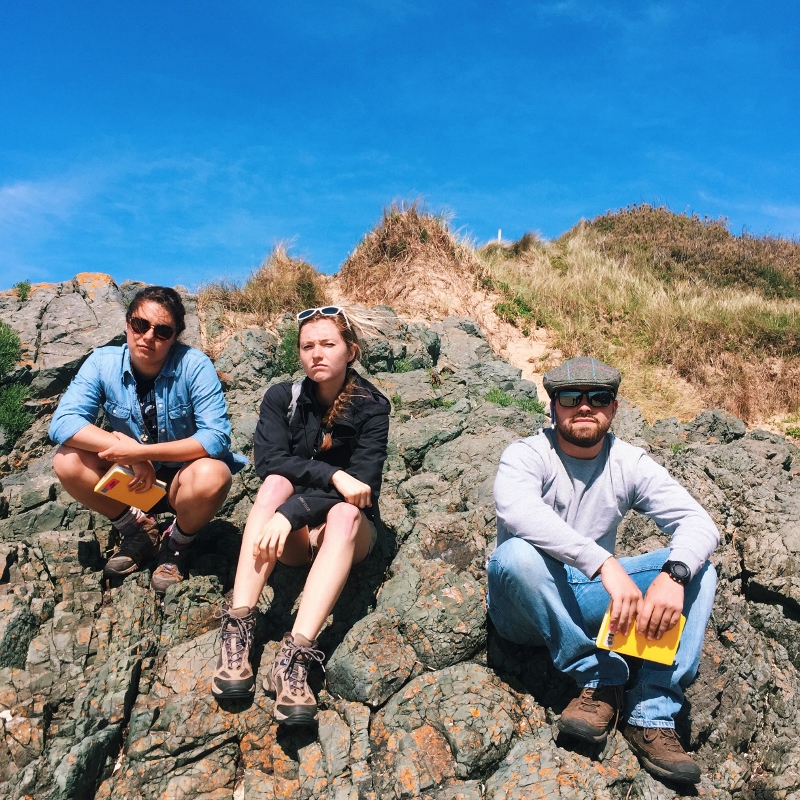
- Ainsdale, England
- Hope College and Liverpool Hope University are running a joint research project, monitoring
changes in a sand dune blowout in coastal dunes along the Irish Sea.
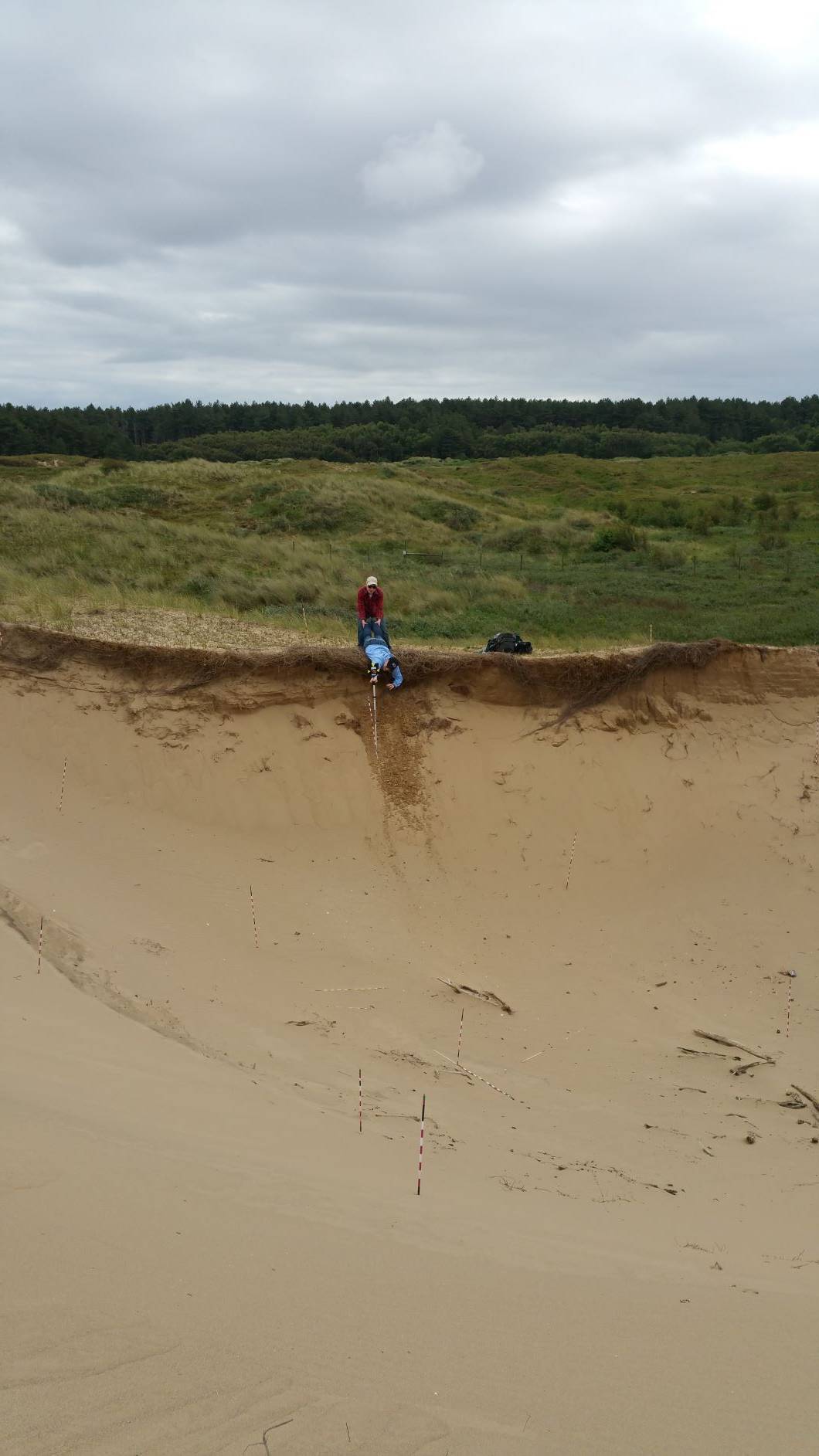
- The Hope College Campus
- A set of monitoring wells on Hope's campus provides opportunities to find surprises
in our own back yard, ranging from variations in the chemical composition of groundwater
to the discovery of populations of groundwater dwelling insects.
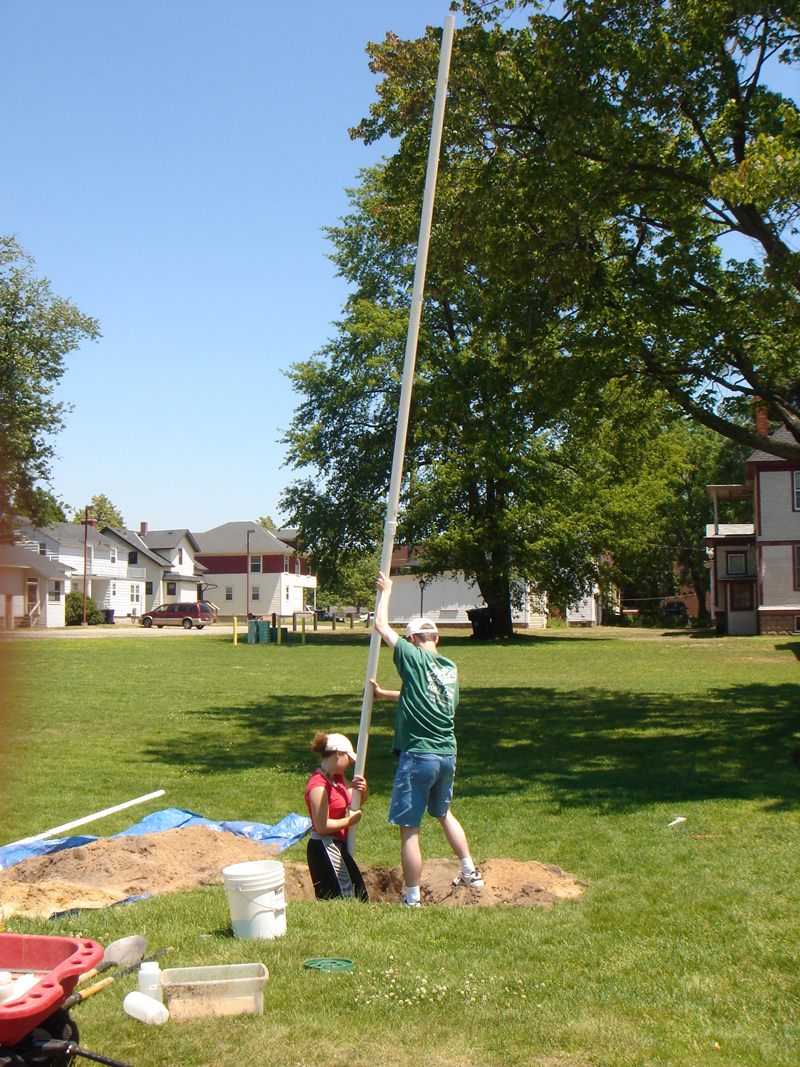
Field trip sites
Regional Geology Locations
- Grand Canyon
- The Regional Geology of Arizona course explores the geology of the Grand Canyon and
other portions of Arizona, as well as visiting the Biosphere 2 research facility.
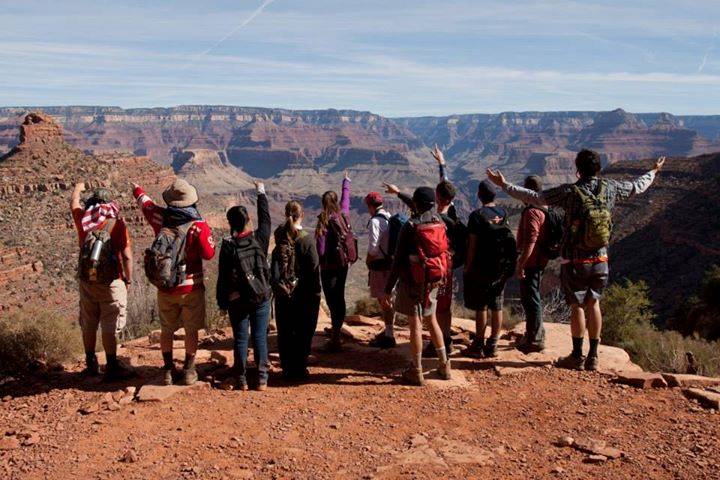
- Death Valley
-
The Regional Geology of Death Valley explores spectacularly-exposed geology in the Basin and Range desert of southern California.
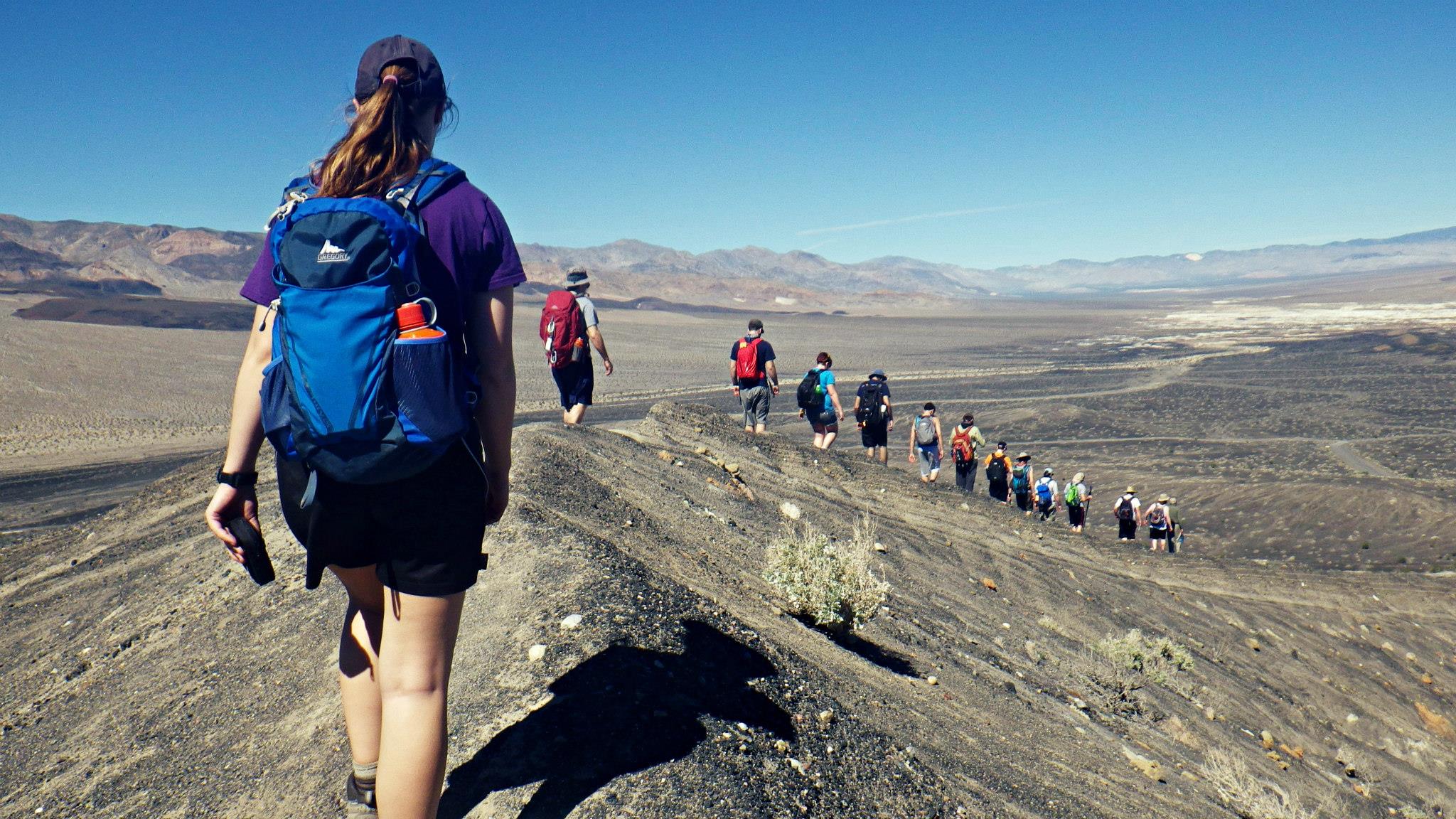
- Northern California
-
The Regional Geology of Northern California examines a host of geological features from Pacific coastlines to the mountains of Yosemite National Park.

- Eleuthera Island, The Bahamas
- Island Life: Biology, Geology, and Sustainability on Eleuthera Island, The Bahamas,
is a regional geology course that focuses on the biological and geological processes
on a limestone island and how these interact to create the resource base for the island.
The course also explores how residents can live sustainably with the resources available
to them.
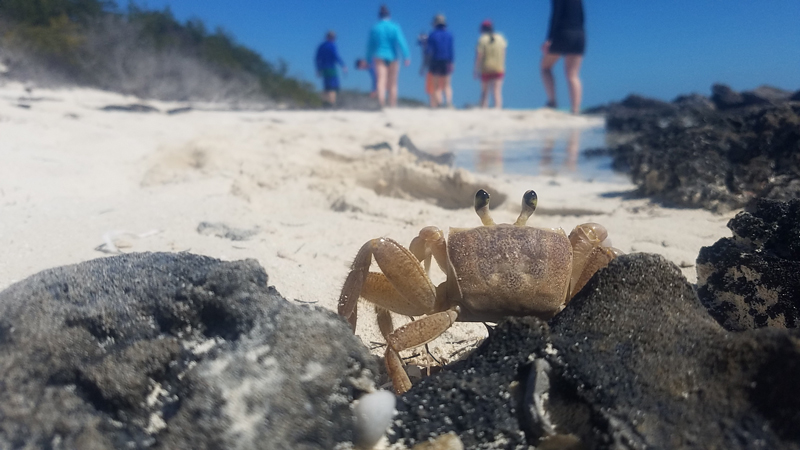
Class field trip sites
- Northern Michigan – GES 125: Michigan Field Geology/Michigan Rocks!
-
Students in the Michigan Rocks! Day1 program for incoming students enroll along with returning students in GES 125: Michigan Field Geology. The course features a 10-day field trip during August where students learn to describe and interpret the geology of northern Michigan. Stops include Mackinac Island, Pictured Rocks National Lakeshore, Jasper Knob, Presque Isle Park, the Seaman Mineral Museum, the Cliffs Mine, Copper Harbor and Silver River Falls.

- Alpena, Michigan – GES 351: Invertebrate Paleontology
- Quarries and the Lake Huron shoreline near Alpena are prime collecting spots for Devonian
fossils that lived in a variety of environments. Students collect corals, crinoids,
brachiopods and other fossils for later study.

- Grand Ledge, Michigan – GES 453: Sedimentology and Stratigraphy
-
The
 banks of the Grand River at Grand Ledge have exposed Mississippian sedimentary rocks that were deposited in varied environments. They are
an excellent place to observe sedimentary structures and stratigraphic relationships.
banks of the Grand River at Grand Ledge have exposed Mississippian sedimentary rocks that were deposited in varied environments. They are
an excellent place to observe sedimentary structures and stratigraphic relationships. - Mammoth Cave area, Kentucky – GES 251: Surficial Geology
- The limestone plateau in western Kentucky is a great place to study caves and karst
formation, as well as observe other geomorphological processes that shape the Earth's
surface.
- Upper Peninsula, Michigan – GES 243: Mineralogy
- Mines, museums and outcrops exposing a diversity of geological settings make Michigan's
Upper Peninsula a rich destination for studying rocks and minerals. An extended fall
weekend trip goes to the Keweenaw Peninsula and back.
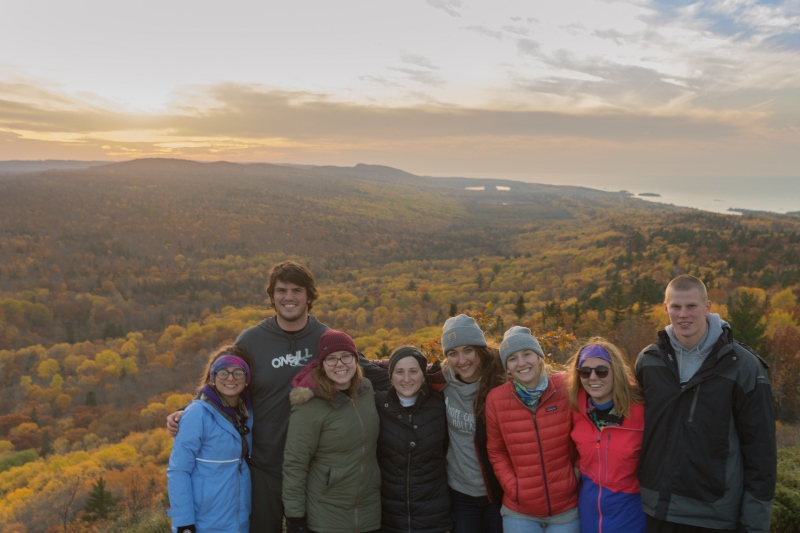
Facilities
A. Paul Schaap Science Center
Reflecting the College’s emphasis on outstanding undergraduate research, the Schaap Science Center is one of the nation's premier undergraduate science education facilities. It houses state-of-the-art research laboratories, hands-on classrooms and more. Learn more.
In addition to instrumentation available to the whole Natural and Applied Sciences division in the Schaap Science Center, the GES department has the following instruments, equipment and facilities.
- Geographic Information Systems Computer Laboratory
- T
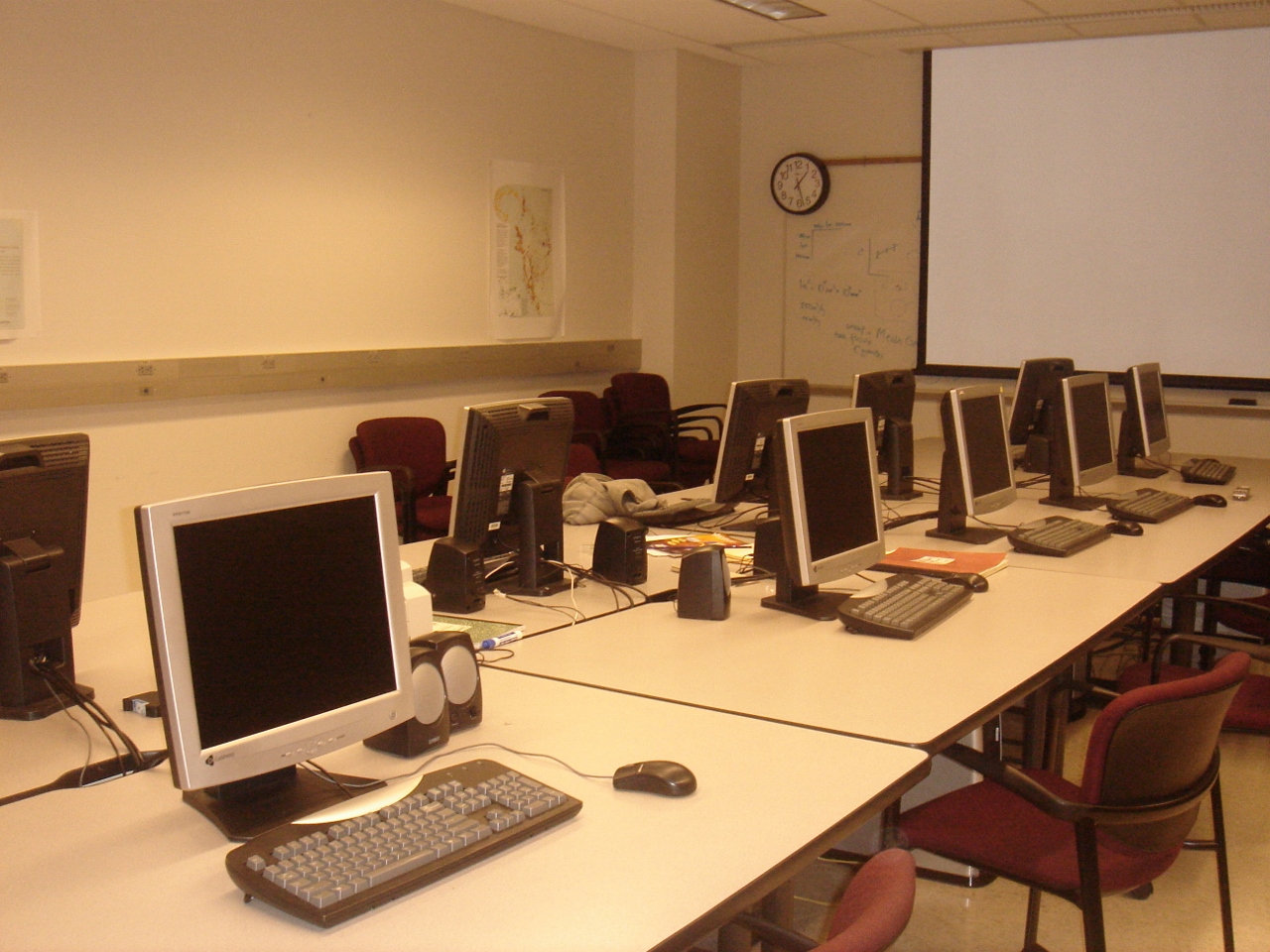 he geographic information system (GIS) lab is a computer lab with software that stores, manipulates, analyzes and displays any data that include a geographic location. Students
and faculty use the GIS lab to create maps of study sites, assess changes in samples
throughout an area of interest, model and measure landscape changes, and view and
interpret remote sensing and air photo data.
he geographic information system (GIS) lab is a computer lab with software that stores, manipulates, analyzes and displays any data that include a geographic location. Students
and faculty use the GIS lab to create maps of study sites, assess changes in samples
throughout an area of interest, model and measure landscape changes, and view and
interpret remote sensing and air photo data. - X-ray Diffractometer
 X-ray diffractometry (XRD) is a technique that uses the interaction of x-rays with
the atoms in crystals to reveal the composition, spacing and structure of solid, crystalline
materials. Students and faculty routinely use a Rigaku MiniFlex powder x-ray diffractometer
to analyze clays and large organic compounds in geology and evironmental science research.
X-ray diffractometry (XRD) is a technique that uses the interaction of x-rays with
the atoms in crystals to reveal the composition, spacing and structure of solid, crystalline
materials. Students and faculty routinely use a Rigaku MiniFlex powder x-ray diffractometer
to analyze clays and large organic compounds in geology and evironmental science research.- Liquid Chromatograph/Mass Spectrometer (LC/MS)
 The liquid chromatograph/mass spectrometer is an instrument that analyzes chemicals
in liquids based on measurements of their mass. Students and faculty use the LC/MS
for the quantitative detection and identification of potential pharmaceutical contaminants
in groundwater.
The liquid chromatograph/mass spectrometer is an instrument that analyzes chemicals
in liquids based on measurements of their mass. Students and faculty use the LC/MS
for the quantitative detection and identification of potential pharmaceutical contaminants
in groundwater.- Leica Total Station
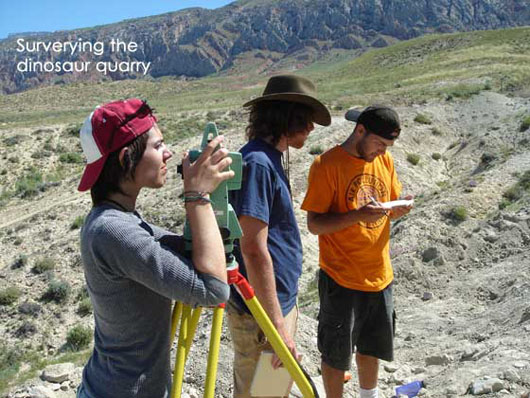 The total station is a surveying instrument that uses an infrared laser beam to measure
the distance and angle to a target. It is useful for creating site maps and locating
the elevation and position of sampling points.
The total station is a surveying instrument that uses an infrared laser beam to measure
the distance and angle to a target. It is useful for creating site maps and locating
the elevation and position of sampling points.- Petrographic Microscopes
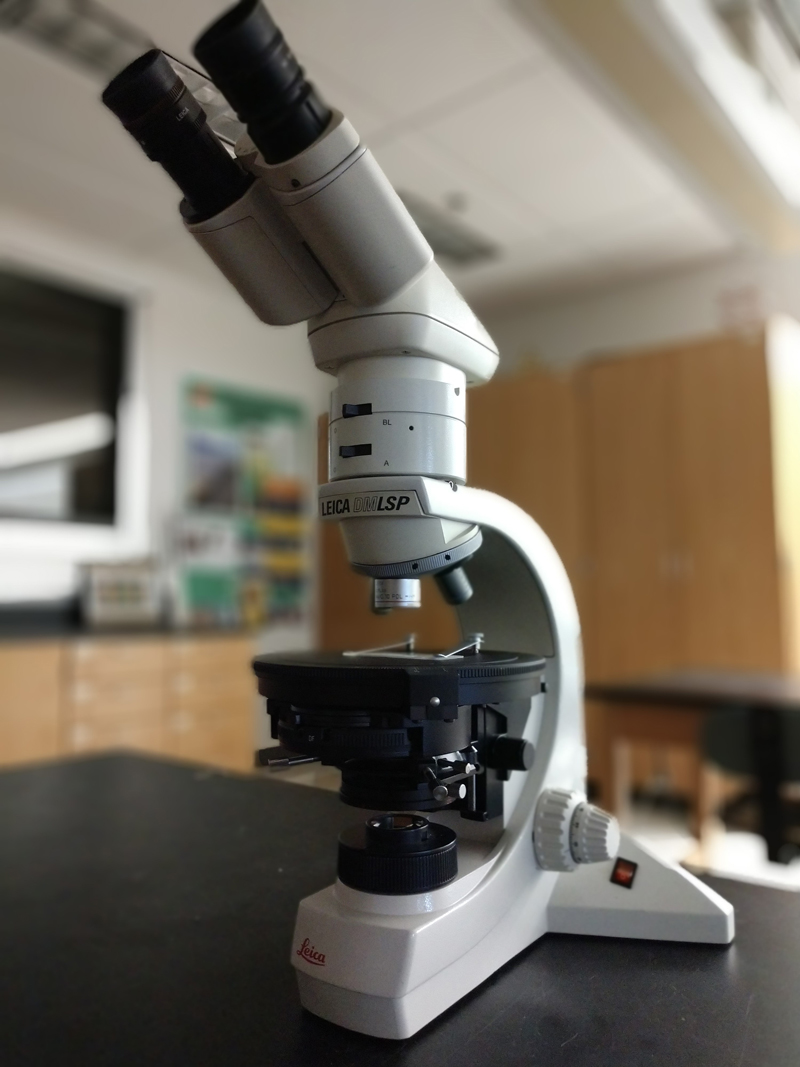 A petrographic microscope passes plain or polarized light through thin slices of rock
(thin sections) to identify rocks, minerals and fossils. The GES department uses petrographic
microscopes in several geology courses and in research projects that study rocks from
around the world.
A petrographic microscope passes plain or polarized light through thin slices of rock
(thin sections) to identify rocks, minerals and fossils. The GES department uses petrographic
microscopes in several geology courses and in research projects that study rocks from
around the world. - ThermoForma Environmental Chamber
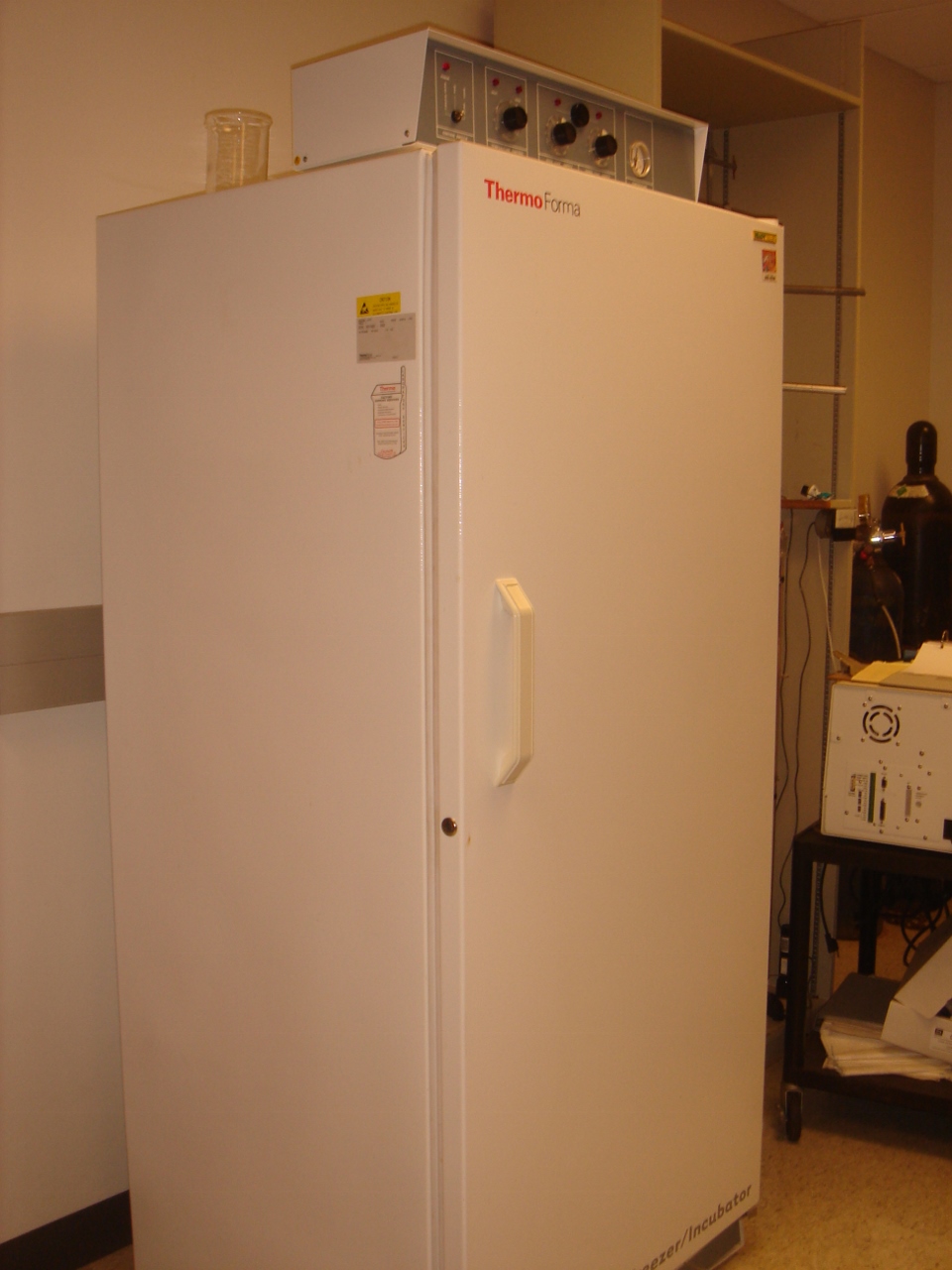 The environmental chamber allows plants to grow under controlled atmospheric conditions
where temperature, carbon dioxide and other factors can be regulated.
The environmental chamber allows plants to grow under controlled atmospheric conditions
where temperature, carbon dioxide and other factors can be regulated.- Dionix Ion Chromatograph
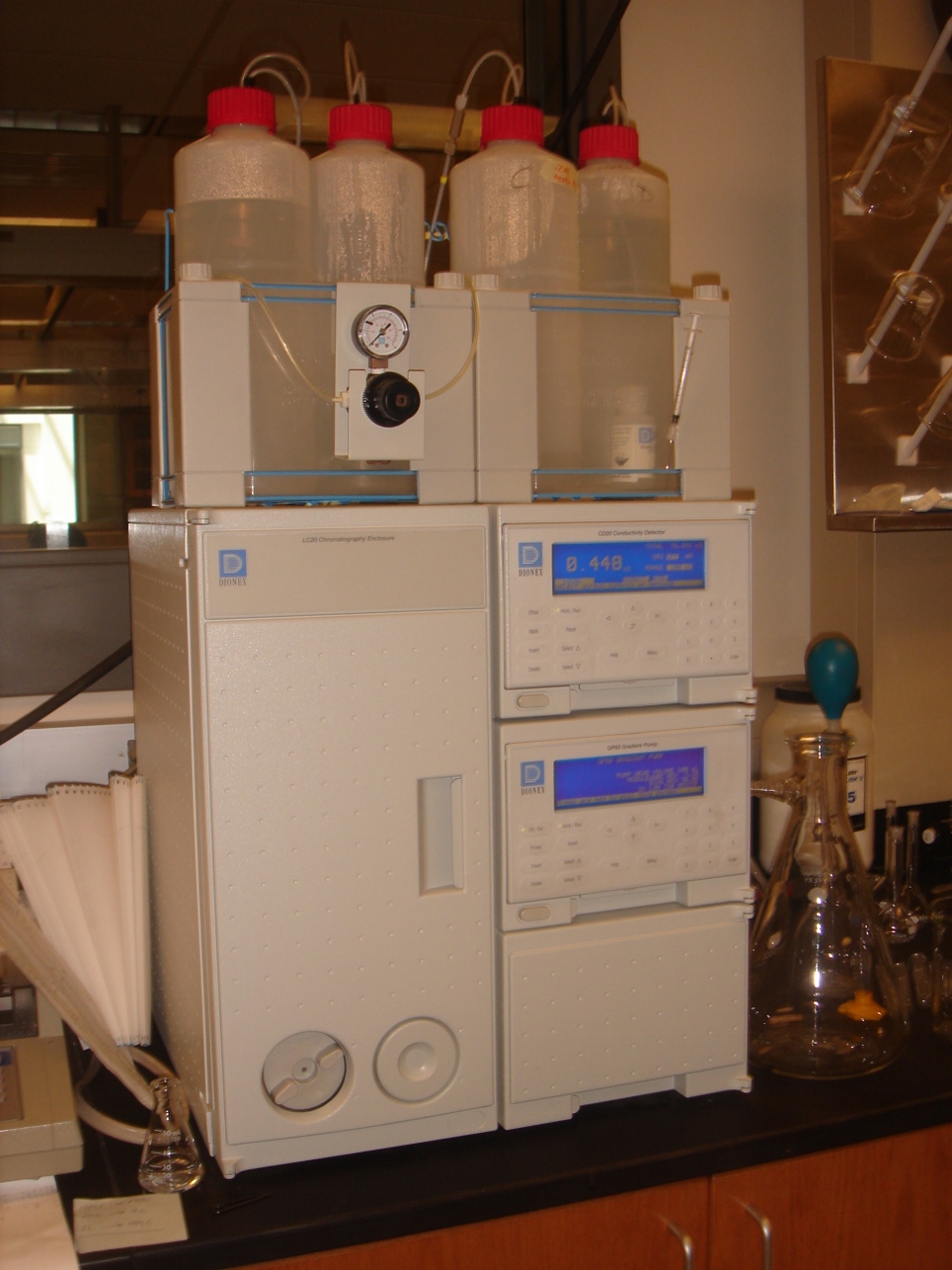 The ion chromatograph (IC) is an instrument used for detecting and quantifying charged
particles in aqueous solutions. Students and faculty use the IC for analysis of groundwater
samples in laboratory classes and research projects.
The ion chromatograph (IC) is an instrument used for detecting and quantifying charged
particles in aqueous solutions. Students and faculty use the IC for analysis of groundwater
samples in laboratory classes and research projects.- High-Performance Liquid Chromatograph
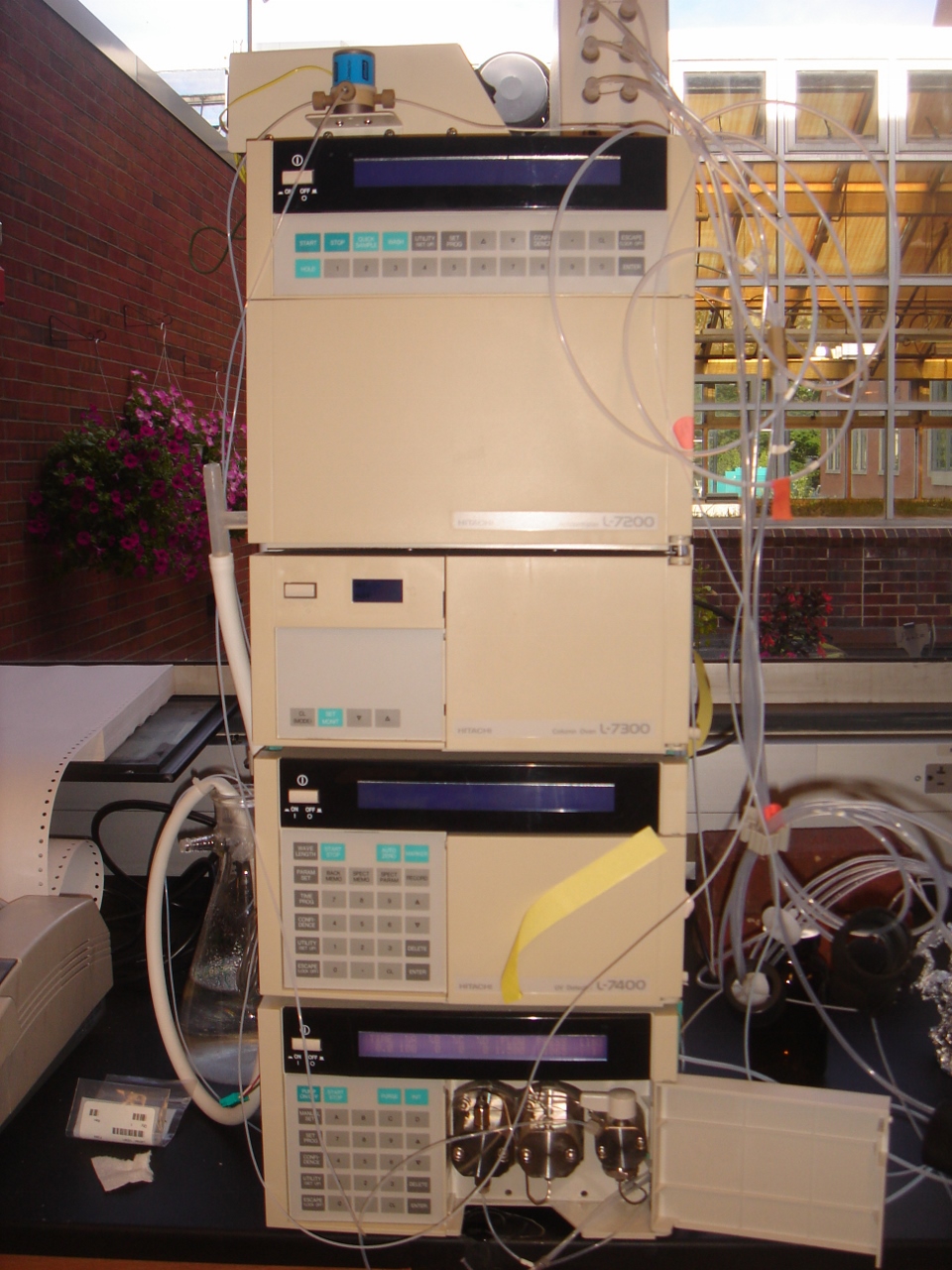 High-performance liquid chromatography (HPLC) separates and identifies compounds in
the liquid phase. Hope College students and faculty use HPLC in groundwater research,
environmental science, chemistry and biology research projects.
High-performance liquid chromatography (HPLC) separates and identifies compounds in
the liquid phase. Hope College students and faculty use HPLC in groundwater research,
environmental science, chemistry and biology research projects.- Rock Cutting and Thin Section Equipment
- The GES department has a varity of saws and polishers to prepare rock and fossil samples
for analysis.
- Samples for Lab and Classroom Use
- The GES Department houses collections of rocks, fossils, sediments and thin sections
from different time periods and places around the world.
- Camping Gear
- The department maintains tents, cots, coolers, and other camping equipment to support weekend field trips in a variety of upper-level classes, Spring Break or May Term regional geology courses, and the August field component of the Michigan Rocks! Day1 course.
A. Paul Schaap Science Center35 East 12th StreetRoom 2107Holland, MI 49423
workP. 616.395.7540
bodenbender@hope.edu
